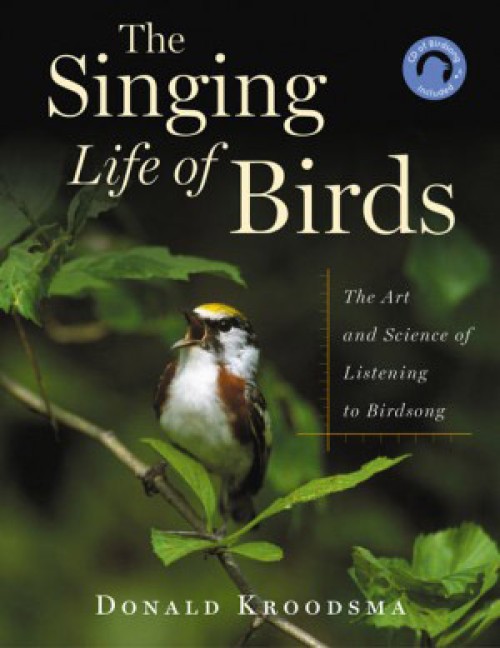by By Donald Kroodsma
Houghton Mifflin, 2005; paperback, 2007
Donald Kroodsma began his life’s work while in graduate school almost 40 years ago when he tried to figure out how a Bewick’s wren learned his songs. Does he learn songs from his father or from neighboring males as he sets up his own territory? Or both? Or neither? This book details Kroodsma’s search for the answers to these intriguing questions, not just for wrens but for many other bird species as well. The most fascinating part is his interpretations of how the songs, once acquired, are deployed. By singing, some birds reveal that they know an enormous amount about each of their neighbors.
I don’t think Kroodsma imagined back then how painstaking it would be to answer those questions – or that the answer to his Bewick’s wren queries would not be at all helpful as he proceeded over the years to analyze the songs of many other bird species. Every bird seems to have a different approach to song, with variations so subtle that they go right by most of us.
Some birds match each others’ songs, which he calls “matched counter-singing.” This is when a neighbor copies a rival’s song in a give-and-take fashion, with one bird introducing a new song from time to time that, again, is copied. Other birds continually return the song sung at them; still others always sing a different tune; and there are almost as many other ways of using songs as there are birds.
The many sonograms – graphic displays of a bird’s song that show frequency changes over time – that are included in this book are very helpful in showing the finer points of birdsong. Variations that for some of us are hard to hear (there’s a CD with the book) are plain to see.
Readers get to go with Kroodsma as he goes into the prairie or forest or, in the case of the tufted titmouse, onto the roof of his own house to set up recording equipment and take detailed notes about who is singing at whom. He likes to have his parabolic reflector and recorder ready to go well before dawn – not a preferred time to climb a ladder onto a steep roof, which in his enthusiasm, he hardly seems to notice.
He makes it easy to imagine that you are with him, carrying some of the gear through the predawn darkness and listening intently for that first bird’s first notes.
The singing behavior of the chestnut-sided warbler, cardinal, bluebird, and a couple dozen other birds all are described and analyzed, each one more interesting than the one before. Sometimes it’s overwhelming – for instance, take the mockingbird: he was taped singing 465 songs in 26 minutes.
Though sedge wrens and marsh wrens are not that different from one another physically, they have a completely different way of learning songs. He and his co-workers unraveled the way these birds come up with their songs by raising babies and exposing them in their first year to a training tape salted with a confusing collection of songs, and then waiting until the following spring to see what the captives had to say.
Understandably, Kroodsma was so eager to hear the yearlings sing that he advanced the coming of spring by lengthening the daylight hours in his aviary. Thus, there was still snow on the ground when the marsh wrens began to imitate almost all the songs they had heard on the training tape. The sedge wrens, on the other hand, each sang dozens of songs, none of which had been on the training tape – they just seemed to improvise.
Kroodsma examines the elements in each bird’s life history and evolutionary trajectory that might explain why learning at daddy’s knee or from your neighbors is or is not adaptive.


